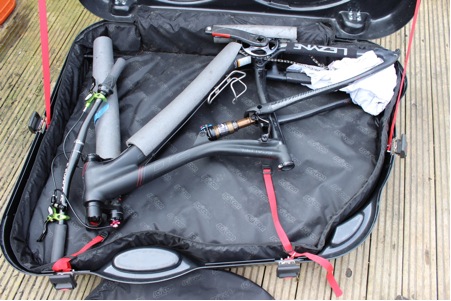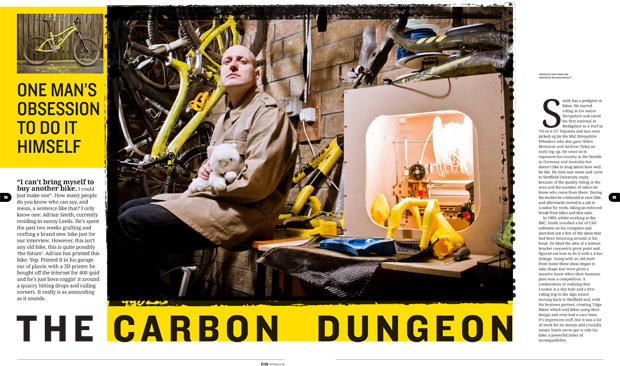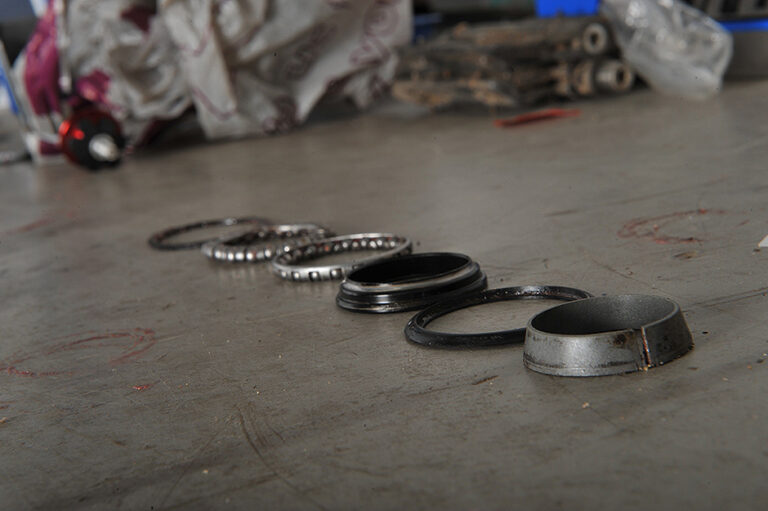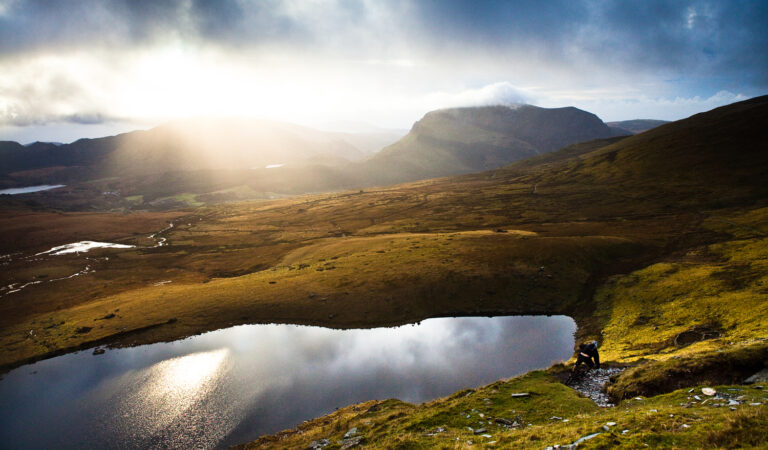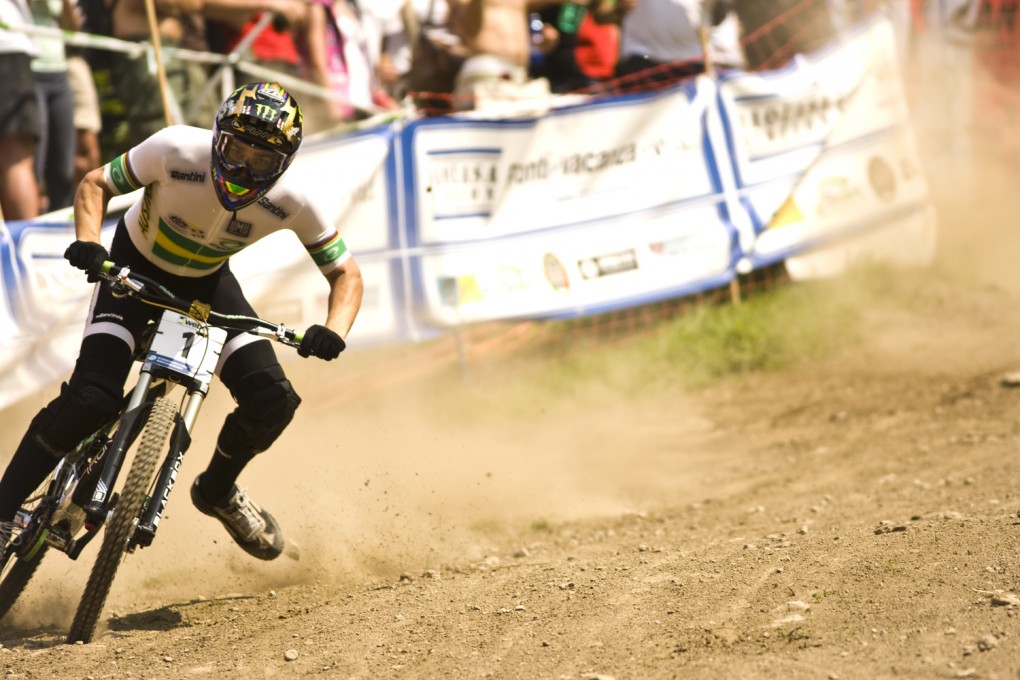
Steve Jones looks into the unseen world of flow on a bike.
“I was already on pole…and I just kept going. Suddenly I was nearly two seconds faster than anybody else, including my team mate with the same car. And suddenly I realised that I was no longer driving the car consciously. I was driving it by a kind of instinct, only I was in a different dimension. It was like I was in a tunnel.” Formula 1 racing legend Ayrton Senna, 1988 Monaco Grand PrixDIRT ISSUE 131 – JANUARY 2013
Words by Steve Jones. Photos by Sterling Lorence
Carrying speed or flow is central to many things we do day to day. It underpins life at the very base levels, from chatting in a pub or around the table, to going on holiday. For example if ‘the beer flowed’ you can be sure to have had a good night, whereas if there was nothing but broken chat and a lightish bill, rest assured the night can’t have been carrying much speed.
Flow is sometimes confused with flying, or vice versa. For example “I flew through check–in”, what you really meant was that you avoided any snags and moved without any stop–starts rather than actually taking off the ground before you took off. I guess “I carried a shit load of speed through check in” might be a better description, but the problem with this is that it was largely out of your control.
In discussing flow reference needs to be made to ‘flow theorists’ such as Mihaly Csikszentmihalyi, a Hungarian psychology professor who hypothesized that to achieve flow you need to be ‘in the zone’, totally immersing yourself into the activity in which you are involved. He reckoned that flow was likely to occur during an activity that was a higher than average challenge and where the individual has above average skills. Csikszentmihalyi reckoned that people with very specific personalities might be better designed to achieve flow, he likened it to artists, a pianist in full flow, harnessing all emotions in the name of performance and learning. The ‘other dimension’ maybe that Senna talked of.
This is not about Csikszentmihalyi’s flow model but simply to recognise that everyone can find it to a certain extent.
Flow, the seamless glide concealing intricate detail, the unseen nose manual in a thirty–yard rock field. It’s that essential sentence you might well miss in the presence of comedian Eddie Izzard at full rattle as he sets off on a series of unpredictable turns and tangents, swerves and side alleys, somehow ending up where he was always heading. It comes in a breathless storm of words, without punctuation, without inhaling. Eddie Izzard maintains incredible flow through complex territory.
You could compare to World Cup masters Aaron Gwin or Sam Hill on a roll. Taking inside lines, glancing rocks, sidestepping roots out of reach of the naked eye. Hunters of grip, specialists of slide, masters of flow, both having reached their riding potential by approaching their art correctly. See, I doubt flow theorists like Csikszentmihalyi will ever study bar room conversations or map people as they shimmy around airports, but Senna? From the outside you could I suppose compare Hill’s run at Val di Sole in 2007 to Senna’s Monaco experience, that top racers can be identifiable with what Csikszentmihalyi describes.
And Izzard? Partly learned, his script is possibly similar to a pianist’s music sheet, but not quite, he’s a bit more like a jazz musician in that it requires an element of instinct and improvisation. Riding trails blind would be the jazz way whereas racing a track could take the learned and practiced concert pianist approach.
CHAPTER ONE
READING THE TERRAINThe ground is something like a music sheet in many respects. In order to read music you need to know the individual notes, the beats, and you need to be able to read the notes in terms of length, timing, rhythm, and knowing you are being directed by what’s on the sheet. Interpreting in as much as how soft or hard, but the instructions are there for you. On a similar level you need to know and interpret the shape of ground and the timing to extract power from that. The ground is the beat, get it and it goes on, get out of beat and the piece fails. Improvisation is all about intuition. But you need to know a hell of a lot to get there. I’d say reading the terrain is as complex as reading music but an elemental aspect to flow. You know the score?
Critically this does not need to be chat about high level performers such as Hill or Izard or concert pianists, but there is a need to differentiate between being ‘in the pipe’ or ‘in the zone’ to the more basic idea of flow that we all might be able to recognize and hopefully unearth.
Yet flow is inexpressible. It’s partly instinct, partly a space in itself. Partly a path of least resistance within a landscape that breeds power in which linking sections becomes part of the interrelated bigger picture. Flow is not describable in words because it’s something ‘other’.
Greats seem to have time in any sport, on the ball, in a section. What gives them this time?It’s not about isolated events. We are taught how to corner, how to manual, how to hit cambers and jumps. Lonely skills, shipwrecked in a sea of mud and rock, separated from reality desperately seeking inclusion. What we really need is continuity, linking one section to another in a seamless movement.
This isolation of ‘events’ can be seen at races even up to world level where there will be at least one rider capable of riding one section faster than anyone else including the winner. Indeed, I often I believe it’s many riders desire to hit that one corner sweetly, once in the day, once in a lifetime. But flow is about moving through the terrain communicating with the ground underneath – interacting, transferring power, generating power, bossing the hill…the entire hill. Scrap the structures on how to hit the one corner perfectly because there’s another hundred to follow.
Avoiding collisions, using and understanding the ground within the trail is a central part of the flow principle. Momentum is your friend in this respect. On a basic level it allows you to hit the high spots, reach the downslopes, hitting what to the untrained eye might be seen as trail minutiae, but to the rider looking for drive they’re key features in which speed can be gained or lost in a blink of an eye. Ever seen Gwinn nose manualling through a rock section? Hardly, because it takes place in a split second. See Peaty riding the braking bumps? Well actually no, he’s about two inches off the edge of the big holes. Is former World Champion Danny Hart concerned with hitting every root at right angles? No he’s in the air above them. Staying away from anything that takes pace out of the bike on the trail needs managing at the very least. It needs remembering that there are two points of contact. Sometimes a basic manual will suffice, often staying clear of both contact points (front and rear) is the best. Remember avoiding the roots at X will give you more speed at Y, that collisions add up and smooth can often be quicker than forcing it. For example, Peaty in practice pushes hard and gets a time, pushes harder and gets the same time.
It’s all about momentum. I think anyone can learn momentum, for it’s partly a mind-set. Yes, generating speed out of the terrain is at a higher level on the skill scale, but even my local pub landlord can ride a mean pump track. It depends on the terrain to a degree, for the severity of terrain will govern an individual’s ability to interpret, apply skill levels, generate drive and hold momentum. Again, avoiding the collisions can be taken to some dizzy heights, but that doesn’t mean we cannot all ride slightly off the main line in the name of momentum.>>


